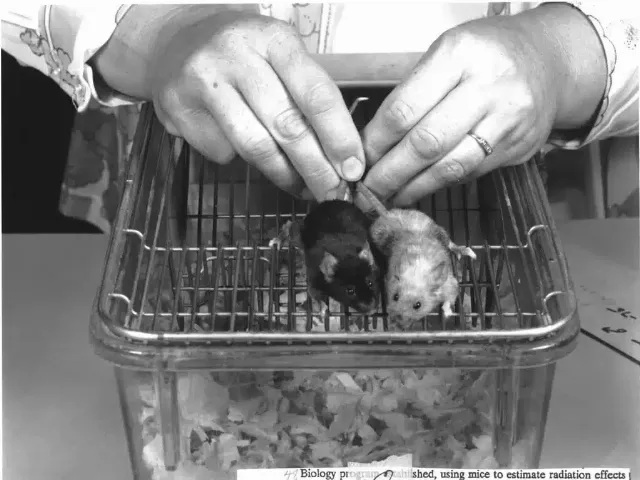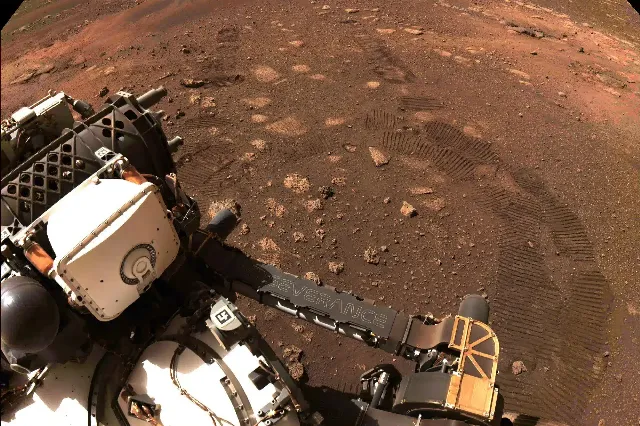Researchers from University College London analyzed the effect of space conditions on the kidneys. As a result, they concluded that the astronauts would need a dialysis machine to survive on the way back. However, the data from the same work is questionable.
Our species is about a decade away from the first expedition to Mars, which causes the scientific community to take a serious interest in the challenges that its participants will face. Today, concerns about gravity look the most serious: without it, a person can lose about 1% of bone mass per month, and with a loss of 20% or more, he may suffer death or, at best, inability to adapt upon return to Earth.
The authors of a new paper in the journal Nature Communications noted that there are other body systems that are in danger. They analyzed the work on the effects of space flights on rodents and 66 astronauts who visited the ISS. Scientists were able to find in these data signs of pathological enlargement of the kidneys and the formation of stones in them.
At the same time, researchers believe that the cause of kidney problems may be both weightlessness and radiation — in particular, galactic cosmic rays, the radiation load from which reaches 0.66 sievert per year outside the Earth's magnetosphere. Among other things, the scientists turned to the data from the NSRL-22A experiment, in which mice were subjected to doses of 0.5 and 0.75 gray (the approximate equivalent is 0.5 and 0.75 sievert for irradiated tissues).
According to the authors of the scientific work, these doses reflected the equivalent of 1.5 and 2.5 years of an expedition to Mars, respectively. The kidneys of the rodents were enlarged and showed signs of malfunction even after six months (this is about a quarter of the life span of mice).
"If we don't develop new ways to protect the kidneys (the scientist talks about pharmaceuticals. — Ed.), then I would say that although astronauts will be able to fly to Mars, they may need dialysis on the way back," said Keith Siew, one of the authors of the study.
Naturally, getting a previously healthy person on dialysis does not look like an acceptable scenario. This option is resorted to only when kidney function is insufficient to ensure a healthy life for the patient.
At the same time, the details of the new scientific work raise great doubt that such a situation will happen at all. Firstly, people on a real flight to Mars will not be in zero gravity for the entire two years of the expedition: the flight there will last no more than four months. Consequently, the astronauts will stay in total weightlessness for a maximum of a third of the entire trip. On the Red Planet, gravity is 0.38 Earth's, and today there is no evidence that such gravity affects the kidneys in the same way as weightlessness.
Secondly, scientists obtained radiation data in a deliberately incorrect way. Mice, as in all other experiments simulating "cosmic radiation", were subjected to literally a few minutes of firing particles similar to galactic cosmic rays. In reality, the participants of the expedition to the fourth planet will receive about 0.75-0.83 sievert in two years, but not in a few minutes.
Let's draw an analogy: a person in ordinary life receives about a hundred watts of electromagnetic radiation (sunlight, heating appliances, other people's bodies). In two years, more than a thousand kilowatt-hours are released, which, however, do not harm us. But if a person receives the same amount of the same radiation in a few minutes, he will undoubtedly die.
Technically, long-term (rather than minute-long) irradiation experiments with radiation exposure to rodents are quite possible, they were conducted back in the 1950s. However, the authors of the new study could not use those data.

If you expose mice to cosmic radiation doses not in minutes, but in the actual duration of flights to Mars, you could not achieve any negative results for their health (but you got positive ones). Therefore, works aimed at identifying the harm from space flights instead expose rodents to unrealistic radiation schemes, such as 0.75 sievert in a few minutes
Image source: ORNL
The fact is that in long-term experiments simulating radiation doses of "cosmic" levels, the animals not only showed no problems, but also lived at 2.2% (males) and 14.6% (females) 1049" target="_blank" rel="nofollow">longer than non-irradiated mice of the same lines. In addition, they (in the case of males) have increased musculature. Naturally, improvements in life expectancy and physical fitness are incompatible with kidney failure.
Because of this, mice in experiments that mimic cosmic radiation are subjected to a single shock effect, giving them a dose of galactic rays not in a million minutes, for which astronauts will receive them, but in just a few.
But it is possible to draw any meaningful scientific conclusions on this basis no more than on the basis of an experiment on irradiating a person with electromagnetic radiation with a force of hundreds of kilowatts. Yes, they will cause fatal harm to health — but this does not mean that light and heating are harmful to people in real life.

